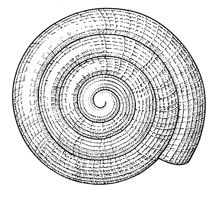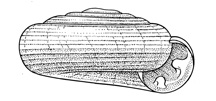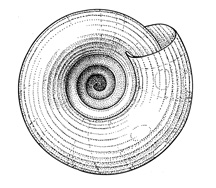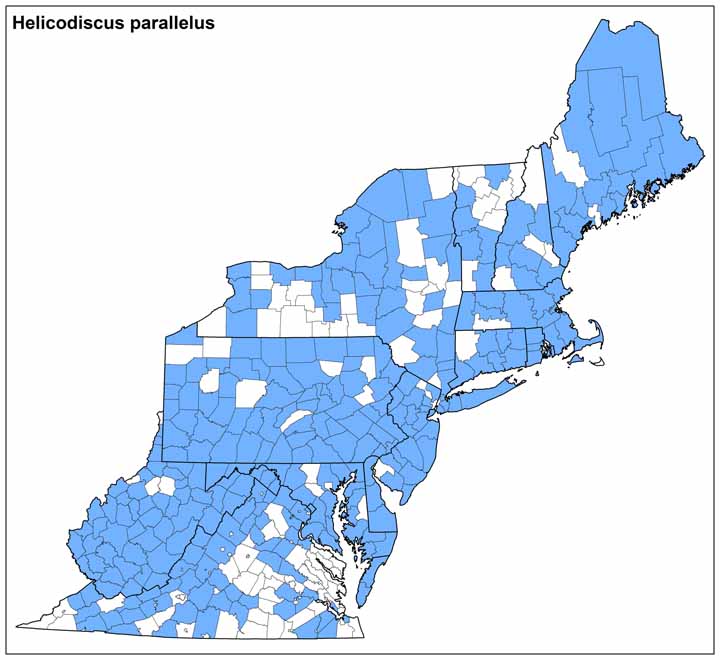Land Snails
.jpg)



Photo(s): Views of a Helicodiscus parallelus shell, © Larry Watrous. Note that the spire is just slightly raised above the plane of the later whorls.
Illustrations © Kathy Schmidt from her series "Land Snails of New York State."
Click photo(s) to enlarge.
Helicodiscus parallelus (Say, 1817)
Family: Helicodiscidae
Common name: Compound Coil
Identification
Width: 3-4 mm
Height: 1.25-1.75 mm
Whorls: 4+
The flattened shell of Helicodiscus parallelus bears parallel spiral lirae that increase in strength on the later whorls. These lines cause the shell to look like a small tire. The narrow, steep-sided aperture is partly obstructed by pairs of cone-shaped teeth, arranged radially. One to three pairs of these teeth may be present, one in the mouth of the aperture itself, and the other pair(s) located further inside the final whorl. The umbilicus is relatively deep for its genus; the spire is low, slightly raised above the body whorl, but not quite as low as that of H. shimeki which is not at all raised.
Ecology
This animal is a blind snail, like others in its family, and lives in damp, decaying wood and leaf matter. It may be found in forested floodplains or uplands, rocky woods, but also open habitats such as grasslands and roadsides. In Maine it was found in habitats from dry forest to wet sedge meadows (Nekola, 2008).
Taxonomy
Synonyms for H. parallelus include Helicodiscus lineatus, H. theresa, Helix lineate, and Planorbis parallellus.
Distribution
Helicodiscus parallelus is found throughout the eastern and Midwestern United States and Canadian provinces, from Maine to Florida and Minnesota to Texas.
Conservation
NatureServe Global Rank: G5
Ken Hotopp, Meegan Winslow 11/2012
Range Map (click to enlarge)


